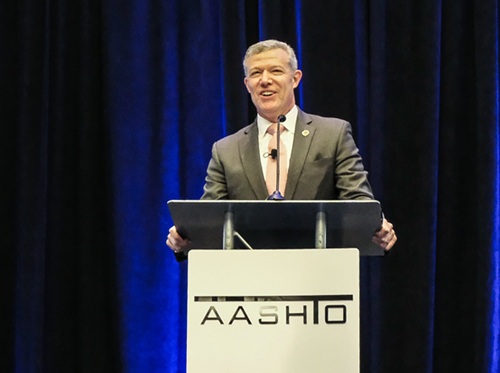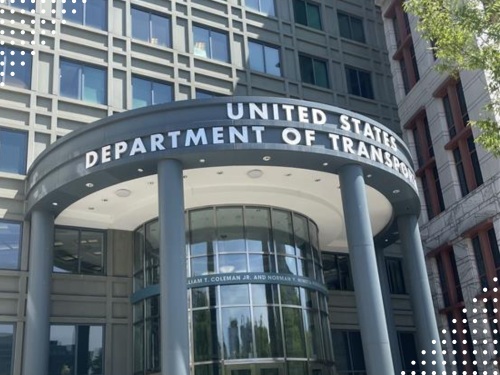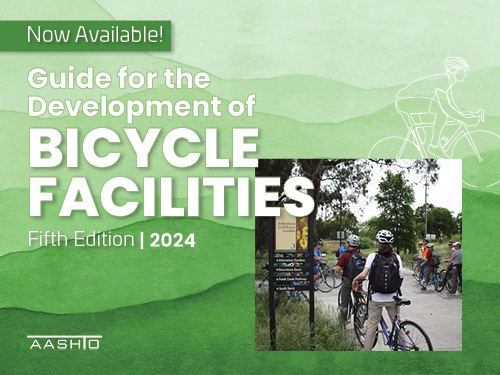The American Association of State Highway and Transportation Officials recently released its “Guide for the Development of Bicycle Facilities, 5th Edition,” which provides information on the planning, design, and operation of bikeways along streets, roads, and highways, as well as on off-street paths in urban, suburban, and rural settings.
[Above image by AASHTO]
Developed by AASHTO’s Committee on Design and the Technical Committee on Non-motorized Transportation, the latest edition of what is colloquially known as the “AASHTO Bike Guide” provides preeminent engineering design guidance on the physical infrastructure needed to support bicycling for travel and recreation in the United States.

“AASHTO and its members are focused on delivering safety, mobility, and access for everyone on our nation’s transportation networks and the AASHTO Bike Guide is one tool state DOTs and other transportation agencies can use to facilitate that,” said AASHTO Executive Director Jim Tymon.
“Communities across the country are all different, but the AASHTO Bike Guide allows each of those communities to learn how to grow, maintain, and operate their bicycle infrastructure – allowing for more transportation options for those who cannot or choose not to drive,” he added.
The guide encourages a flexible approach to design bikeways and emphasizes the role of the planner, designer, and engineer in determining appropriate bikeway types and design dimensions based on project-specific conditions and existing and future performance.
It provides information to assist in choosing the appropriate combination of features, design values, and materials to create the design, while considering the context of the project area and surrounding environment, AASHTO said.

This fifth edition of the “Bike Guide” features significant revisions and updates compared to the fourth edition published in 2012. It contains a total of 16 chapters, including nine new chapters and seven revised chapters. Revised chapters include those on bicyclist operation and safety; bicycle planning; design of shared use paths; design of shared lanes and bike lanes; maintenance and operations; and bicycle parking, bike share site location, and end-of-trip facilities.
Meanwhile, AASHTO said the new chapters include guidance on choosing specific bikeway types; elements of design for all bikeway types; design of shared use paths; design of separated bike lanes and side paths; bicycle boulevard planning and design; design of shared lanes and bike lanes; traffic signals and pedestrian hybrid beacons; bicycle facility design at interchanges, alternative intersections, and roundabouts; rural area bikeways and roadways; structures; and wayfinding systems for bicyclists.
The new “Bike Guide” is available to order in paperback, as a PDF download, or in a set that includes both the paperback version and the single-user PDF download. To order a copy of this new publication, click here or visit the online AASHTO Store and search by the guide’s item code: GBF-5.
Publication of the nationally-focused “Bike Guide” is but one of the many ways AASHTO is working on behalf of state departments of transportation across the country to help develop and support more bike-focused travel options.
For example, state DOTs across the country develop bicycle routes, which AASHTO then officially designates within the U.S. States Bicycle Route System or USBRS.
In February 2021, AASHTO and the Adventure Cycling Association signed a memorandum of understanding or MOU to formalize their now 17-year partnership to create a national 50,000-mile bicycle route network.
Twice each year, AASHTO’s U.S. Route Numbering Special Committee reviews and recommends to the AASHTO Board of Directors revisions, additions, or deletions to the U.S. numbered routes and Interstate Highway System.
The special committee also reviews and recommends the approval of new and revised U.S. bicycle trails that are critical to the expansion of the USBRS.
Also, in October 2021, the AASHTO Council on Active Transportation began implementing a “research roadmap” finalized in July of that year to “prioritize and categorize” state DOT pedestrian and bicycle infrastructure investments in the near future.
That roadmap – developed via the National Cooperative Highway Research Program or NCHRP – seeks to focus on six specific areas:
- Applying and integrating active transportation data into planning and operations;
- Using minimum accommodations versus alternative approaches to increase active transportation;
- Determining context-driven optimal spacing between marked crosswalks;
- Addressing barriers to integrating active transportation throughout planning and engineering practice;
- Racial and economic disparities in pedestrian and bicyclist safety; and
- Speed management solutions and strategies to improve pedestrian and bicyclist safety on arterial roadways.
 Top Stories
Top Stories
USDOT Makes $1.5B Worth of BUILD Grants Available
December 19, 2025 Top Stories
Top Stories

